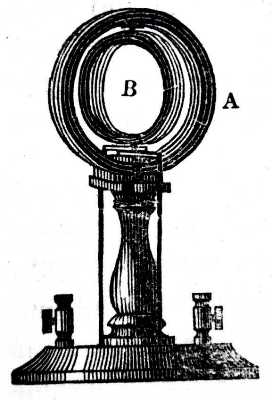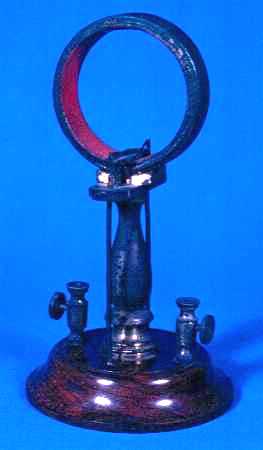 |
"The mutually attractive and repulsive action of currents
may be made to produce a revolution analogous to some of those strictly
called electro-magnetic; as in the instrument represented [here], which
consists of a coil of insulated wire B fitted to rotate on a vertical axis
within a larger one A, mounted on a brass pillar. The inner coil has a
pole-changer [commutator] fixed to its axis of motion for the purpose of
reversing the current twice in each revolution. The current may traverse
the two coils in succession, or be divided between them [serial or parallel
connections], but its direction must be changed only in B.
The coil B being placed at right angles to A, and the cups
on the stand connected with the galvanic battery, the faces of each coil
immediately exhibit north and south polarity... and B is obliged to make
a quarter of a revolution in order to bring its north pole within the |
 |